Description
Coligh utilizes advanced photolithography machines for etching and manufacturing Random Aperture and Pattern Refractive Microlens Arrays. By combining random function design with high-precision microstructure processing, random refractive lenses can achieve higher light uniformity in applications such as laser beam homogenization, wavefront disturbance, and scattering diffusion
Sub-lens shape Random
Lens arrangement: Random
Lens type Refractive: plano-convex
Pitch accuracy: ± 1 μm
Application: Beam homogenization, wavefront perturbation
Random Aperture and Pattern Refractive Microlens Array
Coligh Optics Technology Co.,ltd
Specifications
| Material: | Not Specified |
|---|---|
| Grid Shape: | Custom |
| Effective Focal Length (EFL): | 0.02 mm |
| Lens Pitch: | 0.01 mm |
| Array Width: | 10 mm |
| Array Height: | 10 mm |
| Array Thickness: | 1 mm |
Features
Random Aperture Micro Lens Arrays Key Features
- In the random micro-array lens, the shape of each sub-lens is random, no longer a fixed geometric figure, and no longer any symmetrical or regular form. This irregular shape can be more flexible in beam shaping and light field modulation. And it can adapt to a variety of optical applications, and can be realized as fine-tuning dispersion, scattering and focusing of the light beam.
- In the random micro-array lens, the position of each lens in the lens array is randomly divided, and the spacing and arrangement order between the lenses are not fixed. In this way, the light field can be more uniform, the optical system adjustment can be more delicate, and the optical distortion can be reduced by precisely controlling the density and distribution of the random arrangement.
The type of lens is plano-convex refractive type. This design enables it to achieve more effective refraction of the light beam and achieve lower optical loss. The larger numerical aperture of the plano-convex lens can capture more light. - The combination of random arrangement and random shape can realize beam shaping and focusing mode conversion in irregular space, and can control and optimize the light beam, eliminating the interference caused by regular arrays in traditional optical systems.
Applications
Why are randomly arranged microarray lenses with random apertures needed?
- Random microarray lenses can reduce the periodic interference and moiré patterns associated with traditional regularly arranged lenses, resulting in a more uniform light field distribution.
- Random microarray lenses offer more precise and flexible light field control, enabling more uniform illumination distribution.
- Random microarray lenses can reduce the concentration effect in regular arrays, resulting in a more uniform light field distribution, while also minimizing energy loss caused by uneven light beams.
- Random microarray lenses can be used in complex optical imaging systems such as super-resolution microscopy and lidar to regulate the uniformity of the light source.
Frequently Asked Questions
What are microlens arrays used for?
Microlens arrays are used in imaging and beam shaping, CCD detection, optical communication, multi-beam scanning, CD or DVD read/write heads, and medical and beauty devices.
What challenges do microlens arrays address in traditional optical processing?
They address challenges such as processing high-order aspherical and freeform surfaces, small curvature radii, small apertures, and fabricating multiple lenses on a single glass substrate.
What is the main advantage of refractive microlens arrays?
Refractive microlens arrays offer smaller size, lighter weight, and higher integration while still being based on traditional geometric optics.
What materials are used for the microlens arrays mentioned in the catalog?
The microlens arrays are made from fused silica.
What is the typical wavelength range for these microlens arrays?
The typical wavelength range for these microlens arrays is around 0.6328μm to 1.545μm.
Where is Coligh Optics Technology Co., Ltd located?
They are located at No. 644, Nanhua Street, Shiqiaopu, Jiulongpo District, Chongqing, China.
Similar Products

Cylindrical Microlens Array
Coligh Optics Technology Co.,ltd
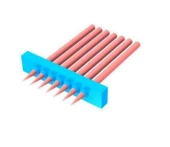
1D Circular Linear Microlens Array
Coligh Optics Technology Co.,ltd
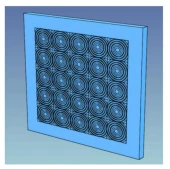
Square Diffractive Microlens Arrays
Coligh Optics Technology Co.,ltd
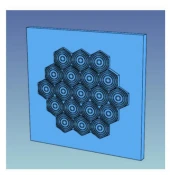
Hexagonal Diffractive Microlens Arrays
Coligh Optics Technology Co.,ltd
Silicon Square Microlens Array
Coligh Optics Technology Co.,ltd
Silicon Hexagonal Microlens Arrays
Coligh Optics Technology Co.,ltd
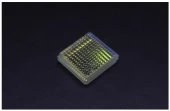
Fused Silica Square Microlens Arrays
Coligh Optics Technology Co.,ltd

Fused Silica Hexagonal Microlens Arrays
Coligh Optics Technology Co.,ltd
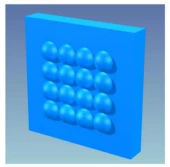
Circular Microlens Array with Square Grid
Coligh Optics Technology Co.,ltd
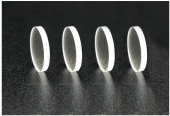
PicoLens High-Precision Microlens Array for Laser Medical Devices
CRYSTECH Inc.

Lithography Microlens Arrays
Coligh Optics Technology Co.,ltd
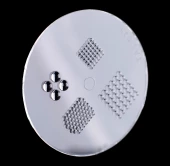
Spherical Polymer Microlens Array
ORAFOL Fresnel Optics
Thank You!
Your inquiry has been received.
Create an account by adding a password
Why create an account?
- Auto-complete inquiry forms
- View and manage all your past messages
- Save products to your favorites
- Close your account anytime — no hassle
